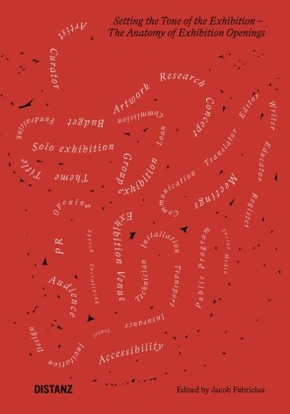Setting the Tone of the Exhibition - The Anatomy of Exhibition Openings
| Verlag | Distanz Verlag |
| Auflage | 2024 |
| Seiten | 416 |
| Format | 14,2 x 3,8 x 20,0 cm |
| Gewicht | 594 g |
| Artikeltyp | Englisches Buch |
| ISBN-10 | 3954767112 |
| EAN | 9783954767113 |
| Bestell-Nr | 95476711A |
Partizipation und Zufall als kuratorisches Prinzip
Die künstlerische Praxis von Hannes Egger (geb. 1981, lebt und arbeitet in Meran, Italien) ist geprägt von einem konzeptionell-partizipativen Ansatz, bei dem die Aktionen der Teilnehmenden oft selbst zum Kunstwerk werden. Thomas Sterna (geb. 1958, lebt in Meran und Frankfurt/Main) beschäftigt sich mit den Bedingungen autonomer künstlerischer Produktion und hinterfragt deren gesellschaftliche und politische Grundlagen.
In ihrem gemeinsamen Projekt Win-Win Lottery nutzten sie das Losverfahren - ein seit der Antike bewährtes Mittel demokratischer Auswahl - als kuratorisches Prinzip. Während der documenta fifteen mieteten sie einen Projektraum im KulturBahnhof Kassel. Statt einer Jury entschied der Zufall: Künstler_innen, Kurator_innen und Ausstellungsmacher_innen konnten Lose erwerben und in vier Ziehungen wurden 13 Gewinner_innen ermittelt, die den Raum frei gestalten durften. Die resultierenden Ausstellungen waren überraschend vielfältig und brachen häufig mit konventionellen Kunstvorstellungen und Bewertungsmaßstäben.
Mit Texten von Hans Dieter Huber und Larissa Kikol, einem Interview mit den beiden Künstlern von Katinka Fischer und einem Gespräch zwischen Hannes Egger, Dan Perjovschi, Farid Rakun (ruangrupa), Thomas Sterna und Judith Waldmann.
Participation and Chance as Curatorial Principle
The artist Hannes Egger's (b. 1981; lives and works in Merano, Italy) practice is informed by a conceptual and participatory approach in which the attendees' active engagement often become a work of art in its own right. Thomas Sterna (b. 1958; lives in Merano and Frankfurt/Main) grapples with the conditions of autonomous artistic production and interrogates its social and political premises.
In their joint project Win-Win Lottery, the two used the drawing of lots-a technique of democratic selection that has been employed successfully since antiquity-as a curat orial principle. They rented a project space at KulturBahnhof Kassel for the duration of documenta fifteen. Instead of a jury, they had chance decide: artists, curators, and exhibition organizers were invited to buy lottery tickets, and thirteen winners were selected in four drawings who were then free to do with the room as they pleased. The resulting exhibitions were surprisingly diverse and often defied conventional ideas about art and standards of its quality.
With writings by Hans Dieter Huber and Larissa Kikol, an interview with the two artists by Katinka Fischer, and a conversation between Hannes Egger, Dan Perjovschi, Farid Rakun (ruangrupa), Thomas Sterna, and Judith Waldmann.

